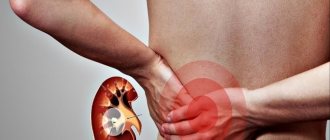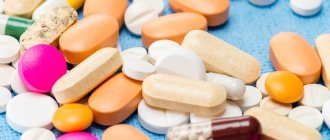Despite their high effectiveness in the treatment of many diseases previously considered incurable, the scope of use of antibiotics is limited by strict indications, and their use may be accompanied by a number of adverse reactions that may appear during the treatment process. And this must be remembered by everyone who begins therapy with antibacterial drugs.
Most often, antibacterial drugs lead to nausea and disorders of the gastrointestinal tract. But in fact, there can be much more side effects from these drugs. And periodically, scientists add to the list of adverse reactions that may occur when taking antibiotics.
Fever
It happens that we independently decide to start taking antibiotics to fight diseases that have led to an increase in body temperature. At the same time, we hope that the temperature will drop. But it may turn out the other way around. It turned out that antibacterial drugs, in a certain percentage of cases, can cause fever or intensify it. 1 This is one of their side effects, which is observed in a number of antibiotics, including those used to treat complications of acute respiratory viral infections.
If your body temperature rises after taking antibiotics or if a previously started fever intensifies, you should stop taking the drug and seek help from a doctor. Don't wait until the heat becomes too intense. The lack of positive dynamics may indicate the ineffectiveness of this drug, which requires a medical decision and adjustment of therapy. High body temperature negatively affects metabolism, which can lead to disruption of water-salt balance when the nervous, cardiovascular and urinary systems are affected. 2
Such conditions are life-threatening, so before treatment it is necessary to make an informed decision and begin treatment with antibiotics only if there are compelling reasons and after consulting a doctor.
The harm of antibiotics to the intestines
The term intestinal dysbiosis refers to all diseases in the small intestine that occur due to microflora disturbances. They are accompanied by loss of intestinal cells and an increase in their permeability. The influence of antibiotics on this process is undeniable. Even one dose of an antibiotic can significantly affect the microflora.
In medicine, relatively recently, they began to realize the negative consequences that antibiotics cause, the side effects of which must be minimized immediately. Any antibiotics can change the intestinal flora, but some of them - penicillins, cephalosporins, fluoroquinolones, clindamycin - are a direct cause of antibiotic-associated and pseudomembranous colitis. The first develops under the influence of antibiotics, the second is caused by clostridia bacteria, which rapidly multiply against the background of damaged microflora.
Think about your immune system in time. If antibiotics are essential for you, talk to your doctor about which medications you should take at the same time as antibiotics to restore your levels of beneficial bacteria. This will help minimize the effects of taking antibiotics, and intestinal treatment will not be so long and expensive.
If you are prescribed antibiotic treatment, you need to take preventive measures and undergo a course of probiotic therapy to restore beneficial bacteria that were destroyed during therapy. The most optimal preparations after antibiotics are liquid concentrates of bifidobacteria and lactobacilli Bifidum Bagh and Trilact. In addition to the fact that beneficial bacteria cover the intestines with a continuous protective biofilm, leaving no chance for fungi, they also normalize metabolism and digestion, which reduces bloating, the body quickly cleanses itself of toxins, and improves immunity. To achieve this effect, the number of probiotic bacteria must reach a certain titer. It is generally accepted that a probiotic should contain 10 million colony forming units per gram. For comparison: the liquid probiotic Bifidum Bag contains 10 to 12 power (1000 billion) bacteria, that is, this figure is higher than other probiotic preparations that are prescribed after antibiotics.
At the same time, intestinal dysbiosis is corrected with a diet high in soluble and insoluble fiber and low in saturated fat and animal protein. These reduce the concentration of bacteroids and increase the concentration of bacteria that produce lactic acid: bifidobacteria, lactobacilli and lactic acid streptococci.
Adding fiber to the diet can have different effects on the treatment of dysbiosis. Insoluble fibers reduce the concentration of bacteria and their activity. Soluble fiber, on the other hand, increases bacterial concentrations and enzymatic activity while increasing levels of beneficial short-chain fatty acids. In most cases, you can successfully eliminate mild symptoms of irritable bowel syndrome by learning to manage stress and making diet and lifestyle changes.
Fungal diseases
Antibiotics can lead to dysbiosis and contribute to the development of fungal infections. 3 It turns out that you can treat one disease, and in the “load” get another.
Fungi can affect the mucous membranes of the gastrointestinal tract, as well as the skin and genitourinary system. If the fungal disease is generalized, that is, has spread throughout the body, then there is a risk of damage to internal organs. 4
When a fungal disease develops, other infections are often associated, which can lead to a sharp decrease in immunity, ulcers, even baldness and other unpleasant and dangerous consequences. To avoid such complications, doctors sometimes prescribe antibiotics along with antifungal drugs, which increases the burden on the body.
Allergy
Of course, one of the most common side effects of antibiotics is allergies. 5 In this case, an itchy rash and swelling may appear on the skin. In severe forms, the eyelids, lips and tongue become swollen, there is difficulty swallowing and speaking, severe weakness appears, heaviness is felt behind the sternum and shortness of breath even at rest. This is how anaphylactic shock manifests itself - an acute pathological condition that is life-threatening. In case of rapid development of allergy symptoms, emergency medical care and resuscitation measures are necessary.
It is also necessary to take into account the fact that antibiotics can enter our body along with some food products - for example, meat may contain penicillins. This means that almost every person has a risk of developing allergies when taking antibacterial drugs. 6 This once again indicates the need for medical supervision when taking antibiotics.
Antibiotic therapy support
Particularly important for patients with allergies.
During treatment, it is recommended to take probiotics as part of complex therapy orally and, if indicated, locally from the first day of treatment and during the recovery period after treatment. It is recommended to increase the daily dose of probiotics by 2 times relative to age. The minimum interval between taking the probiotic and the drug is 2-3 hours.
The order, duration and frequency of administration, the amount of daily and single doses of a probiotic for a particular patient are determined by the attending physician and may differ from the recommended regimen. For example, according to the decision of the attending physician, it is possible to take only one or two of the three drugs of the complex.
Probiotics when taking antibiotics
Probiotics Bifidum BAG and Trilact are indicated for use from the first to the last day of taking the antibiotic in double dosage with a spread of time for taking the probiotic and antibiotic at 2-3 hours. After a course of antibiotics to restore your own microflora, a probiotic course is 3-4 weeks in age-specific dosages.
Broad-spectrum antibiotics eliminate both the causative agent of infection (staphylococcus, streptococcus, Klebsiella, Proteus and many other bacteria) and beneficial microflora. Bifidobacteria and lactobacilli are among the main ones in the functioning of the body's immune system. Without them, the immune system does not work.
Short course of antibacterial therapy (5 - 10 days)
Taking increased doses of probiotics orally and locally as indicated from the 1st day of treatment.
The interval between taking an antimicrobial drug and a probiotic is 3 hours.
According to the decision of the attending physician, Ecoflor from 2 to 3 packs can be added to Bifidum BAG and/or Trilact. per day for the entire period of therapy to prevent toxic damage to the liver and other organs.
Recovery period after treatment (rehabilitation) - recommended after completion of any treatment that requires medication. Necessary for consolidating the results of treatment and obtaining a longer and more lasting result, achieving long-term remission, reducing the number of relapses of the disease and improving the patient’s quality of life
After completing the treatment course, it is recommended to conduct a restorative course of taking probiotics - 40 days (see)
Recommended regimen for use of Bifidum BAG/ Trilact/ Ecoflor for the correction of intestinal flora after antibiotic therapy, children over 12 years of age and adults.
Course duration 40 days
| Stages of treatment | Duration | Time and dosage of medications |
| Preliminary stage | 1-15 day | In the morning – Ecoflor 1 pack During the day – Ecoflor 1 pack In the evening – Bifidum BAG 6 ml |
| 1st stage | 16-40 day | In the morning – Trilact 6 ml In the evening – Bifidum BAG 6 ml |
View all articles in the “Microbiocenosis” section
Pregnancy
An unexpected side effect of antibiotics, isn't it? In fact, we are talking about an increased risk of becoming pregnant in those women who simultaneously take oral contraceptives and certain antibiotic medications. The reason is that certain antibacterial drugs increase the production of enzymes in the liver, which increase the breakdown of estrogen from the pill, thereby reducing the effectiveness of birth control medications. 8
Currently, scientists continue to study the mechanism of the effect of various antibiotics on contraceptives. If you are not planning a pregnancy, use additional barrier methods of contraception during treatment and for another week after completion of the course.
What you need to know about taking antibiotics?
Author of the article: Lavrishchev Alexander Alexandrovich, therapist
1. What are the purposes of antibiotics and what are they not for?
Antibiotics are medications that inhibit the growth and/or reproduction of bacteria in your body. They are not effective against viral infections, nor for those conditions where the infection is an apparent thing. For example, some people after a myocardial infarction may develop a condition similar to pneumonia (inflammation of the lungs), but this is not associated with infection - in this case, the patient's immune system will attack the lung tissue that it was originally supposed to protect: the use of an antibiotic is pointless, it is necessary other groups of drugs.
2. How to take an antibiotic correctly?
First of all, the best antibiotic is the one you didn't take. Of course, you will encounter bacterial infections from time to time in your life, and sometimes you will need help dealing with them. However, today in our country it is customary to prescribe antibiotics “right and left,” which clearly contradicts common sense. Therefore, when choosing a good doctor for yourself, you are choosing a medicine in which antibiotics are used less often in general, and not because they are somehow terrible, but because the reasons for their use are not so common. Secondly, each course of antibiotic treatment must be strict in duration: even if you feel better the very next day of taking the drug, continue treatment exactly until the day the doctor prescribed for you. Usually this is 5-7 days of treatment, but it can be more or less. The fact is that if the course of treatment is interrupted, the bacteria inside you may become resistant to the drug and the next time you need the help of this medicine, it will not be effective. You can also pass on antibiotic-resistant bacteria to another person, which entails unnecessary risks: for example, the doctor will not immediately understand that the medicine is not helping, and the person will be sick longer. The problem of bacterial resistance to antibiotics is so pressing for the entire planet that scientists are sounding the alarm because the industry is unable to produce new antibiotics, and people's lives are at risk. Thirdly, the remaining nuances of taking an antibiotic depend only on the instructions of your attending physician: he will recommend that you take the drug before or after meals, indicate the number of doses of the drug on each day of use, and so on.
3. What should I take with the antibiotic?
It would be more correct to say that you shouldn’t drink it. Of course, you should not take the antibiotic with alcohol. There are also nuances with other drinks: in pharmacology there is another drink that can play a cruel joke on you, and it is not very obvious at first glance. This is grapefruit juice. The fact is that grapefruit juice contains substances that affect liver enzymes involved in the neutralization of drugs. Therefore, when taking certain medications and grapefruit juice at the same time, the medications may not work as intended by doctors - for example, they may be quickly eliminated from the blood, or, on the contrary, remain there longer than usual, which can lead to poisoning. Otherwise, you should use plain water at room temperature to take medications. By the way, special forms of administration have been developed for some antibiotics - they are called “Solutab” (for example, “Flemoxin Solutab”); at the same time, you can swallow the tablet and wash it down with water, or you can dissolve the tablet in water and drink the resulting solution (a pleasant or acceptable taste - scientists have taken care of this), which is very convenient for small children and older people, as well as for those who may have difficulty swallowing tablets. Solutab forms work as effectively as, for example, intravenous injections of the drug, so the need for antibiotic injections at home today is a relic of the past.
4. Do I need to take prebiotics and antifungals at the same time?
NO NEED. From a scientific point of view, prebiotics (medicines that contain cultures of live bacteria that inhabit the intestines) work only in television advertising and in the wallets of pharmacy owners: the bacteria that you take from the prebiotic are also killed by the antibiotic, and that in patients taking prebiotics diarrhea does not develop - this is the merit of scientists and pharmacologists who come up with antibiotics and make them safer. If you take a prebiotic, your chance of getting diarrhea is exactly the same as if you didn't take it. Please keep in mind that such diarrhea will not be treated with prebiotics, but (!) with other antibiotics - so just consult your doctor. As for antifungal drugs, many patients have an established opinion that they will definitely develop thrush in response to taking an antibiotic - and indeed, sometimes this happens. However, there are many pitfalls here: first, antifungal drugs are one of the most toxic drugs today, and second, thrush is not some kind of infection following an antibiotic. This is a disease of your immunity, which normally should itself suppress the activity of fungi, so you need to deal with the immune system, and not endlessly take not the safest drugs.
5. What to do if you miss a pill?
Modern antibiotics are typically taken once a day, so take your dose as soon as possible after you remember you missed it. If you need to take an antibiotic several times a day, just take the next dose of the drug.
6. What are the side effects of antibiotics?
Variety. Firstly, these are allergic reactions to taking the drug, and no one is immune from this. Usually your doctor should ask you if you are allergic to a particular antibiotic, and do not forget to remind the doctor that you are allergic to antibiotics or even other drugs - sometimes this is also important when choosing an antibiotic. Secondly, some antibiotics can affect heart rhythm, so if you have arrhythmia, ask your doctor if your drug will affect your heart disease. Third, some antibiotics are more likely to cause diarrhea than others. However, modern antibiotics affect the intestines less and less, since scientists have provided various protection systems - most drugs either hardly reach the intestines, or do not act on the intestinal mucosa, where the “maternity hospitals” of your bacteria are located, so after taking the drug - your own bacteria They will restore everything themselves. Keep in mind that if you are afraid of diarrhea, antibiotic injections are more likely to cause diarrhea, since the medicine enters the bloodstream more massively, affecting all layers of the intestine along its entire length.
7. What to do if an allergic reaction develops?
Stop taking the drug and contact your doctor as soon as possible. If you feel very unwell—for example, swelling of your neck, face, mouth, and/or difficulty breathing—call 911 immediately. If you have an allergic reaction to an antibiotic, this does not mean that all antibiotics will work the same, you just need to change the drug.
8. Is it safe to take an antibiotic together with other drugs?
This should only be decided by your doctor. Most good doctors today have in their pocket access to specialized databases that help assess the interactions of a wide variety of drugs, and the risks of combining them. The only thing is that antibiotics should not be taken with sorbents - substances that supposedly absorb toxins from the intestines - such as enteral gels or activated carbon: along with the mythical toxins, these drugs will absorb the antibiotic itself, and then go down the toilet with it and your money.
9. What to do to avoid antibiotic resistance?
Antibiotic resistance is a condition in which the bacteria in your body become resistant to the action of an antibiotic, as we discussed above. Again, always take the antibiotic for as many days as your doctor prescribes. Second: do not use the same antibiotic more than once every 6 months, so if you need to take an antibiotic again less than 6 months after the last course, tell your doctor about it, and he will prescribe you a drug from a different group. LAST: Never prescribe an antibiotic yourself!
10. What are they doing now to cope with this problem?
Firstly, it is now difficult to buy an antibiotic without a doctor's prescription - and this is absolutely true: antibiotics should be used only when necessary, and only a doctor can deal with this. Secondly, guidelines are constantly being published for doctors on how to properly treat a particular infection: which antibiotics should be used more often and which ones should not be used at all. Thirdly, good doctors use bacteriological research methods before prescribing you a drug - for example, the doctor will ask you to take a sputum or throat swab before a course of drug treatment. A microbiologist in the laboratory will try to isolate a bacterial culture from your biomaterial and test it for sensitivity to antibiotics - therefore, in case of possible failure, the doctor will already be armed with information on how to accurately treat the infection. The downside is that this study takes 5-7 days, and you need to be treated today. Fourthly, scientists and pharmacologists are constantly coming up with methods to protect against antibiotic resistance: they invent new molecules, and also add adjuvants to antibiotics - substances, for example, that prevent bacteria from breaking down the antibiotic.
11. What alternatives to antibiotics are there now?
There are few such alternatives, and yet they are exotic and not always available. Firstly, these are bacteriophages - viruses that destroy certain bacteria. A solution of such a bacteriophage can treat mild infections - sometimes by taking this solution orally, and sometimes by washing the affected area with it. For the nose, of course, this is very uncomfortable. In addition, bacteriophages are active strictly against certain bacteria, they are rarely found, and in general they are justifiably unpopular. It probably doesn’t make sense to treat an acute infection with them - more time will be spent searching. However, some chronic infections are treated with them, especially in people with multiple allergies to antibiotics, which, fortunately, is extremely rare. Secondly, scientists are now looking at different classes of substances that exhibit antimicrobial activity, for example, odorous substances from plants - like those found in pine needles or garlic. However, this is just a project for now. THE MOST IMPORTANT ALTERNATIVE TO AN ANTIBIOTIC IS A GOOD DOCTOR who will not prescribe you an antibiotic for no reason! Without understanding how to make your course of treatment better and easier!
Making an appointment with a general practitioner
To clarify the details, consult a qualified specialist at the Semeynaya clinic.
Single contact center
8 495 662-58-85
weekdays 8-21, weekends 9-21
To find out more about prices for seeing a therapist or other questions, please follow the link below:
Therapy
What do you need to remember?
It is necessary to be very careful when choosing medications and, if possible, choose those that have the greatest therapeutic and least toxic effects. Therefore, you should not take antibiotics if there is no indication for this and these drugs are not recommended to you by your doctor.
For ARVI and sore throat, in most cases it is advisable to choose symptomatic therapy, which helps to get rid of unpleasant symptoms, regardless of the cause of their occurrence. The drug Strepsils® Intensive, lozenges [honey-lemon] has a local analgesic and anti-inflammatory effect on the mucous membrane of the mouth and throat: reduces swelling, difficulty swallowing, pain and irritation in the throat.9
The drug helps eliminate sore throat, regardless of the cause of its occurrence (be it viruses, bacteria or fungi).









